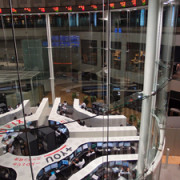Archive | Economics RSS feed for this section
Economics
 Economics
Economics
 Economics
Economics
 Economics
Economics
 Economics
Economics
 Economics
Economics

ASEAN Economic Community 2015: What is next?

In 2007, the 10-member Association of Southeast Asian Nations (ASEAN) bloc adopted the goal of creating an integrated economic region—termed the ASEAN Economic Community (AEC)—by December 2015. However, concerns have been expressed that the regional integration project’s 2015 deadline will be missed due to an overly ambitious timeline and too many ill-thought-out initiatives. With the AEC deadline looming, this article critically assesses the progress that has been made, charts some of the main challenges, and suggests the next steps for the AEC.
Paths to development: Is there a Bangladesh surprise?

Bangladesh’s economy has recorded remarkable economic performance in the new millennium, though its per capita income has remained low. Even more spectacular has been the steady improvement in its levels of many social development outcomes. Popular commentaries have drawn comparisons with India and Pakistan in highlighting the significance of Bangladesh’s development achievements. This phenomenon has been termed as the “Bangladesh conundrum,” and has received extensive coverage in international media outlets, such as the New York Times, the Economist and the Wall Street Journal.
An analysis of challenges faced by Abenomics

In December 2012, Japan’s Liberal Democratic Party won the general election, making Shinzo Abe Prime Minister of Japan, a post that he had previously held in 2007. “Abenomics” refers to the economic policies advocated by the prime minister after the election, which were designed to revive the sluggish economy with “three arrows”: (i) fiscal consolidation, (ii) more aggressive monetary easing by the Bank of Japan, and (iii) structural reforms to boost Japan’s competitiveness and economic growth.
From the Russian Federation’s focus on Europe to its pivot to Asia

The United States’ “pivot to Asia” has been intensely discussed over the last years. But recently, a new pivot model has come up: the Russian Federation’s pivot to Asia. This article analyzes this topic from an economic perspective by asking: Is the Russian economy really about to shift its focus thus far centered on the European Union (EU) to Asia?
Can president-elect Joko Widodo transform Indonesia’s economy?

Indonesia's president-elect Joko Widodo (Jokowi) has declared he aims to push the growth rate of the economy above 7% a year. The growth rate has been running below 6% a year, and the World Bank and IMF predict that it will continue at 5.6% and 5.8%, respectively, in 2015.
Improved flight connectivity could spur tourism and economic growth in the Pacific region

Tourism is one of the most promising growth sectors in the Pacific region. The number of tourist arrivals has more than doubled in the past decade, from around 600,000 in 2002 to 1.3 million ten years later. The potential for tourism in the Pacific is substantial as many islands offer unspoiled nature and scenic landscapes. However, travel to the Pacific can be inconvenient. There are only 35 direct flights from countries outside the Pacific to countries in the Pacific and the flight frequency is low. New research by ADBI shows that the number and frequency of direct flights is an important determinant on the number of tourist arrivals in the Pacific. The research also highlights that the potential of receiving large numbers of Asian tourists remains untapped. However, realizing the great potential of tourism will not only depend on better connectivity, but also on the capacity of Pacific region countries to respond to the growing demand.


Search
Subscribe / Connect to Asia Pathways
Subjects
- Agriculture and natural resources
- Blog
- Capacity development
- Climate change
- Economics
- Education
- Energy
- Environment
- Finance sector development
- Gender
- Governance and public sector management
- Health
- Industry and trade
- Information and Communications Technology
- Infrastructure
- Miscellaneous
- Population
- Poverty
- Private sector development
- Regional cooperation and integration
- Sanitation
- Social development and protection
- Transport
- Uncategorized
- Urban development
- Video Blog
- Water
Recent Posts
- Navigating Linear Transport Infrastructure Through Conservation Landscapes
- How Are Technology Trends Shaping the Future of Insurance?
- Securing Asia’s Future Through Soil Health: Why It Matters and What Must Be Done
- Silent Struggles: Advancing Women’s Mobility with Public Transportation in Asia
- Mind Your Neighbors: Measuring Shrimp Farm Spillovers




Recent Comments